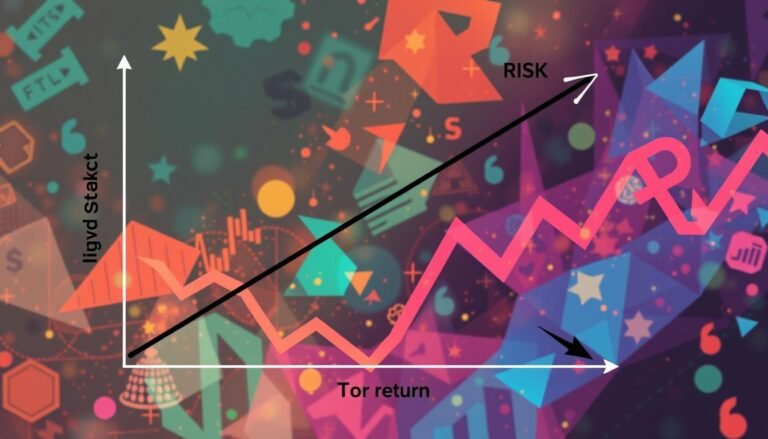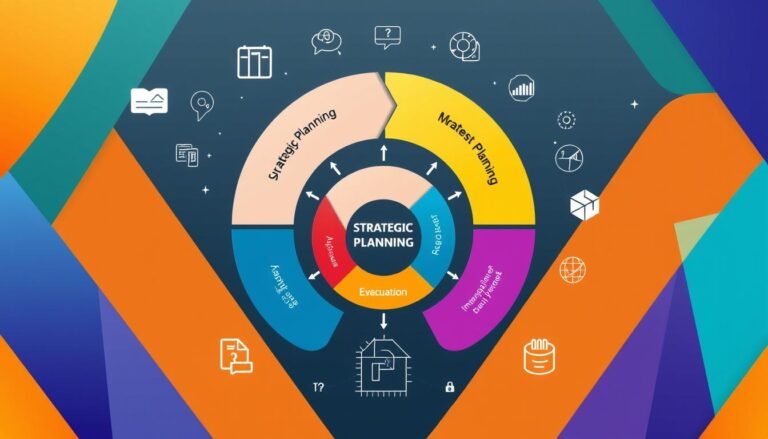Unlock Your Pricing Potential with Strategy Matrix
Is your pricing strategy holding back your business’s growth? In today’s competitive world, having a smart pricing strategy is key to making the most profit. The Pricing Strategy Matrix is a powerful tool that helps businesses make better pricing choices.
With a clear pricing plan, companies can dodge the mistakes of poor pricing. These mistakes can shrink profit margins and miss out on chances for growth. This article will show you why optimizing your prices is important. It will also explain how a strong pricing matrix can match your products’ value with market demand. Let’s dive into how smart pricing can boost your business’s success.
Key Takeaways
- The Pricing Strategy Matrix simplifies complex pricing decisions for better alignment with market needs.
- A well-defined pricing strategy is essential to prevent low profit margins and missed opportunities.
- Understanding the components of the matrix can enhance overall business growth.
- Effective pricing strategies can adapt to various market segments and customer preferences.
- Utilizing a pricing matrix provides flexibility and control in setting prices strategically.
The Importance of Strategic Pricing in Business Growth
Strategic pricing is key to growing a business and ensuring success. A good pricing strategy helps in making more profits, getting a bigger market share, and staying ahead of competitors. Without a smart pricing plan, a company might see lower profits and lose customers.
Understanding the Consequences of Poor Pricing Choices
Poor pricing can lead to big problems. Setting prices too high can cause a company to lose customers. On the other hand, prices that are too low can cut into profits a lot. Both situations hurt a company’s ability to grow and stay financially healthy. It’s important for companies to check their pricing often and make sure it matches their goals and the market.
Key Objectives for Implementing a Pricing Strategy
Having a strategic pricing plan is vital for several reasons, including:
- Increasing market share by offering prices that draw in more customers.
- Boosting profit margins with prices that match what customers are willing to pay.
- Setting prices that make customers feel the value of what they buy.
- Adjusting prices for different groups of customers to meet their expectations.
Getting pricing right can greatly affect how much money a company makes. It’s a key part of marketing.
What is a Pricing Strategy Matrix?
The Pricing Strategy Matrix is a key tool for companies to make smart pricing choices. It shows how price relates to quality, helping businesses find their spot in the market. With this tool, companies can pick from four main pricing models for different customers.
This makes it easier for businesses to create pricing strategies that meet market needs.
Definition and Core Concepts of the Pricing Strategy Matrix
The Pricing Strategy Matrix breaks down price strategies into options for different customers. It helps businesses decide on prices based on what customers value most. Companies that update their prices often see big benefits, like almost doubling their revenue per user.
This keeps their prices in line with what customers are willing to pay, making their strategy stronger.
Brief Overview of Pricing Methodologies
There are many pricing methods, each suited for different situations. Competitive pricing matches a company’s prices with rivals to stay relevant. Value-based pricing focuses on the worth customers see in a product, often with tiered models to keep customers coming back.
Shopify uses a tiered pricing strategy, offering a free basic level and more features in higher tiers to keep users engaged.
Penetration pricing draws in customers with low initial costs, while skimming pricing lets tech firms earn high profits with high starting prices. Premium pricing creates an elite image, great for luxury markets where quality matters a lot.
Successful companies use the Pricing Strategy Matrix to share features clearly, make information easy to get, and improve user experience. This makes pricing a key way to grow.
Components of the Pricing Strategy Matrix
A successful pricing strategy starts with the Pricing Strategy Matrix’s components. Each part is key, guiding businesses in setting prices and aiming for profits. It helps stay competitive in the market. Knowing these parts leads to pricing that matches business goals.
Base Price and Its Significance
The base price is the core of pricing strategies. It covers costs, profit margins, and market trends. A strong base price is vital for smart pricing and long-term profits. Companies must look at their costs and market trends to set a competitive yet sustainable price.
Common Adjustment Criteria Influencing Pricing Decisions
Changes to the base price come from many factors, affecting pricing. Some common ones include:
- Purchase volume: Buying more can mean lower prices for bulk orders.
- Customer demographics: Different groups may react differently to prices, needing specific strategies.
- Purchasing history: Regular customers might get discounts based on their buying habits.
These factors let businesses tailor their prices to the market and customers, making their strategies work better.
Price Points and Strategic Implementation
Choosing the right price points is key for a pricing matrix. These prices depend on market conditions and what customers want. This approach boosts the value seen by customers and makes it easier to compare with competitors.
The table below shows different price points and strategies in the Pricing Strategy Matrix:
| Strategy Type | Examples | Target Market |
|---|---|---|
| Skimming | Game consoles, new phones | Early adopters, high-income consumers |
| Premium | Apple products, designer clothing | Quality-conscious consumers |
| Economy | Aldi, JetBlue | Cost-sensitive consumers |
| Penetration | New phone contracts, special launch prices | Wide consumer base looking for value |
With these key elements, businesses can craft a strong pricing strategy. This leads to better profits and a strong market position.
Types of Pricing Strategies within the Matrix
Knowing about different pricing strategies in the Pricing Strategy Matrix is key for businesses. They aim to boost their revenue and market presence. Each strategy has its own benefits based on the market and business goals.
Price Skimming: Maximizing Revenue from Core Customers
Price skimming lets companies set high initial prices for new products. This targets early adopters. It’s great during product launches, helping to cover research and development costs.
As demand drops, companies lower prices to reach more people. This strategy helps get the most revenue at each product stage.
Penetration Pricing: Attracting New Market Segments
Penetration pricing means setting prices lower than rivals to quickly gain market share. It’s good for new businesses in tough markets. By offering low prices, companies draw in price-conscious buyers and beat big competitors.
Once they have a good market share, prices can go up. This supports long-term profits.
Economy Pricing vs. Premium Pricing Strategies
Economy pricing aims for the lowest price to boost sales, often used by discount brands. This method leads to lower profits but can sell a lot if done right. On the other hand, premium pricing sets high prices to make a product seem more valuable.
Brands that use premium pricing make more profit. They attract customers who are happy to pay more for quality and uniqueness.
Real-World Applications of Pricing Strategy Matrix
The Pricing Strategy Matrix is widely used across industries. Retailers use it to set prices by offering discounts and rewards. This approach boosts customer happiness and sales. For instance, online stores price products in a way that attracts various customers, making shopping easy for everyone.
How Retailers Use Pricing Matrices Effectively
Retailers benefit from a pricing matrix by looking at product types and market segments. They set prices based on things like storage size, speed, or support levels. For example, a clothing maker changes prices with the seasons to match what people want to buy.
Adapting a Pricing Matrix for B2B Businesses
B2B companies also find great value in a pricing matrix. They change prices based on things like contract length and service levels. This way, they offer custom deals that fit what clients need. It helps them make more money and stay competitive. Looking at what competitors charge also gives them insights to make better choices.
The Role of Pricing Strategy in SaaS Pricing Models
In SaaS, the pricing matrix is key for shaping effective SaaS subscription models with tiered pricing that matches user needs.. Companies use value-based pricing to offer different prices for different levels of use and features. This approach increases revenue and makes customers feel they’re getting a good deal. Brands like HubSpot show how setting clear value metrics, like “contacts,” can lead to growth and strong customer relationships.
Source Links
- The Pricing Strategy Matrix | Set The Right Price
- Price Matrix
- Orb | What is a pricing matrix? Examples inside
- 16 pricing strategies + examples | Zapier
- The Power of Pricing: A Potent Marketing Weapon and Profit Motivator
- What is a pricing matrix? 4 Pricing matrix examples for high growth
- Pricing Strategy Matrix of Profit Stars and Supporting Cast
- Pricing Strategy Matrix Guide | Lucidity
- Administering Pricing
- Pricing Strategy Matrix
- Kotler’s Pricing Strategies Best Practices, Tools & Templates – The Best Free Online Resources
- How to Choose a Pricing Strategy for Your Product
- Price Matrix: How to Use a Price Matrix to Analyze Your Pricing – FasterCapital
- Pricing strategy guide: 7 types, examples, & how to choose







